So far I have been just using text labels within cells that should auto-size themselves. I usually put constraints to all of the edges (content view or neighbors) and add the following lines to my viewDidLoad():
// 190.0 is the actual height of my custom cell (see next image) in the storyboard containing a label and a randomly sized UIImageView
tableView.estimatedRowHeight = 190.0
tableView.rowHeight = UITableViewAutomaticDimension
Now, when trying to include with images, I face several problems. During some research I found several approaches written in Objective-C but whereas I'm not sure which of those really addressed my central problem I'm still struggling with complex Objective-C code. So to resume: My final goal is to get a table with correctly sized (correct heights) cells, each containing a title and an image that fits the width of the screen. Those images can be of different aspect ratios and different sizes. To simplify some of the challenges, I prepared a new, more simple project:
- First, I created a
UITableViewControllerand aCustomCellclass with two IBOutletstitle: StringandpostedImage: UIImage(UIImage randomly sized in the storyboard) to configure the cells. I defined constraints to the edges and to each other.

- When built, two cells get configured containing the same image but they are fetched from two individual files with different sizes and resolutions (900 x 171 vs. half-sized 450 x 86). The UIImage view mode is set to "Aspect Fit" but as I couldn't get it run the way I want so far I'm not sure this is the right setting. Whereas I had expected the cell height to be calculated based on the rescaled UIImage inclusively the constraints I had set, it seems to be based on the initial height of the image files (so 171 and 86). It doesn't actually adapt to the actual UIImage view height (around 70 I'd guess).

In a somewhat more complex project of mine I want different images to automatically fit the width of the screen no matter whether they are portrait or landscape - and in case their width is less then the screen's width, they should be scaled up. Like in the project above each cell height should fit its individual content as defined by the constraints in the storyboard. Anyway, it starts with the problem discussed above: How can I let those two cells have the same, correct height, hugging its content like defined in the storyboard?
Thanks a million for any help!
